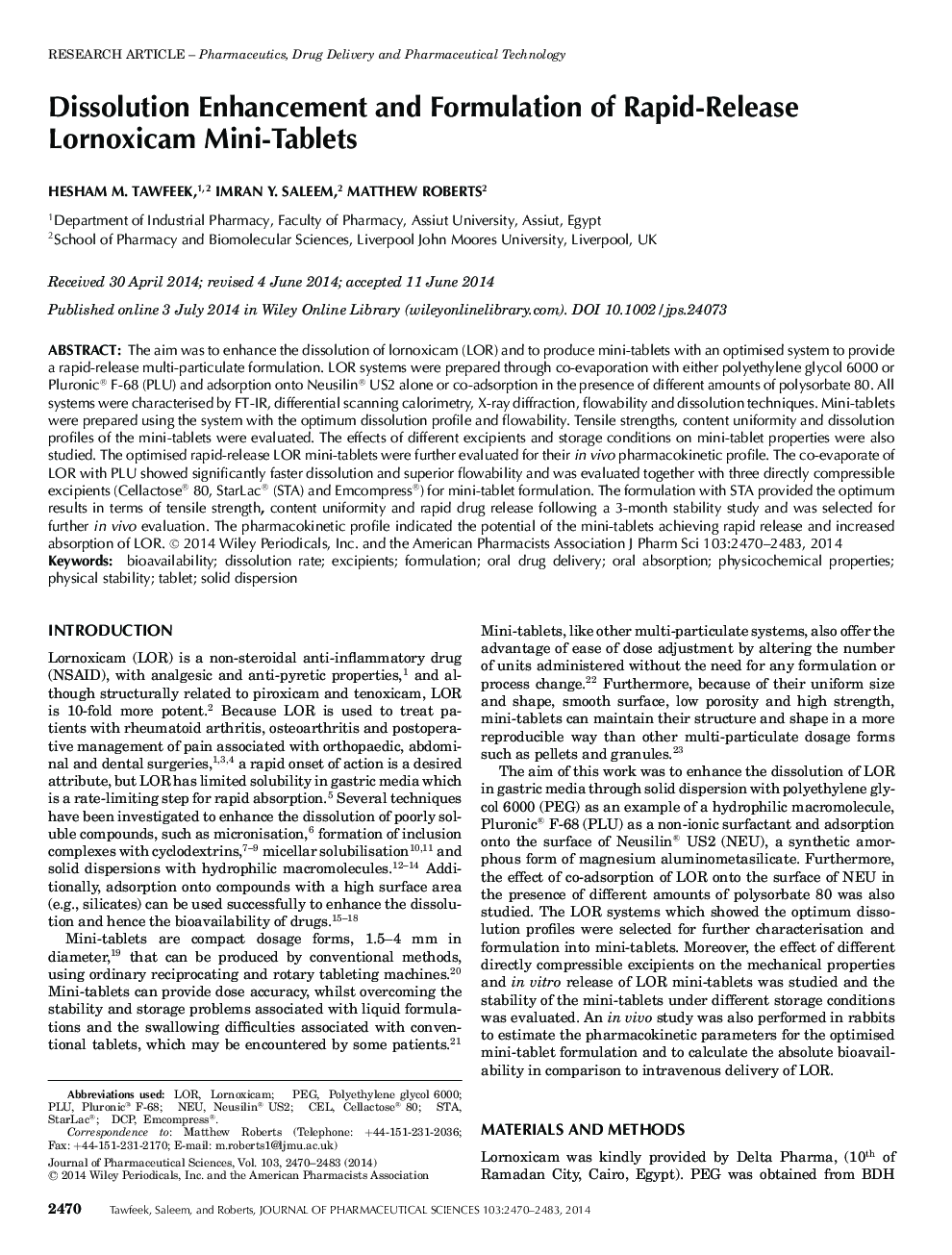| Article ID | Journal | Published Year | Pages | File Type |
|---|---|---|---|---|
| 10162326 | Journal of Pharmaceutical Sciences | 2014 | 14 Pages |
Abstract
The aim was to enhance the dissolution of lornoxicam (LOR) and to produce mini-tablets with an optimised system to provide a rapid-release multi-particulate formulation. LOR systems were prepared through co-evaporation with either polyethylene glycol 6000 or Pluronic® F-68 (PLU) and adsorption onto Neusilin® US2 alone or co-adsorption in the presence of different amounts of polysorbate 80. All systems were characterised by FT-IR, differential scanning calorimetry, X-ray diffraction, flowability and dissolution techniques. Mini-tablets were prepared using the system with the optimum dissolution profile and flowability. Tensile strengths, content uniformity and dissolution profiles of the mini-tablets were evaluated. The effects of different excipients and storage conditions on mini-tablet properties were also studied. The optimised rapid-release LOR mini-tablets were further evaluated for their in vivo pharmacokinetic profile. The co-evaporate of LOR with PLU showed significantly faster dissolution and superior flowability and was evaluated together with three directly compressible excipients (Cellactose® 80, StarLac® (STA) and Emcompress®) for mini-tablet formulation. The formulation with STA provided the optimum results in terms of tensile strength content uniformity and rapid drug release following a 3-month stability study and was selected for further in vivo evaluation. The pharmacokinetic profile indicated the potential of the mini-tablets achieving rapid release and increased absorption of LOR. © 2014 Wiley Periodicals, Inc. and the American Pharmacists Association J Pharm Sci 103:2470-2483, 2014
Keywords
Related Topics
Health Sciences
Pharmacology, Toxicology and Pharmaceutical Science
Drug Discovery
Authors
Hesham M. Tawfeek, Imran Y. Saleem, Matthew Roberts,
